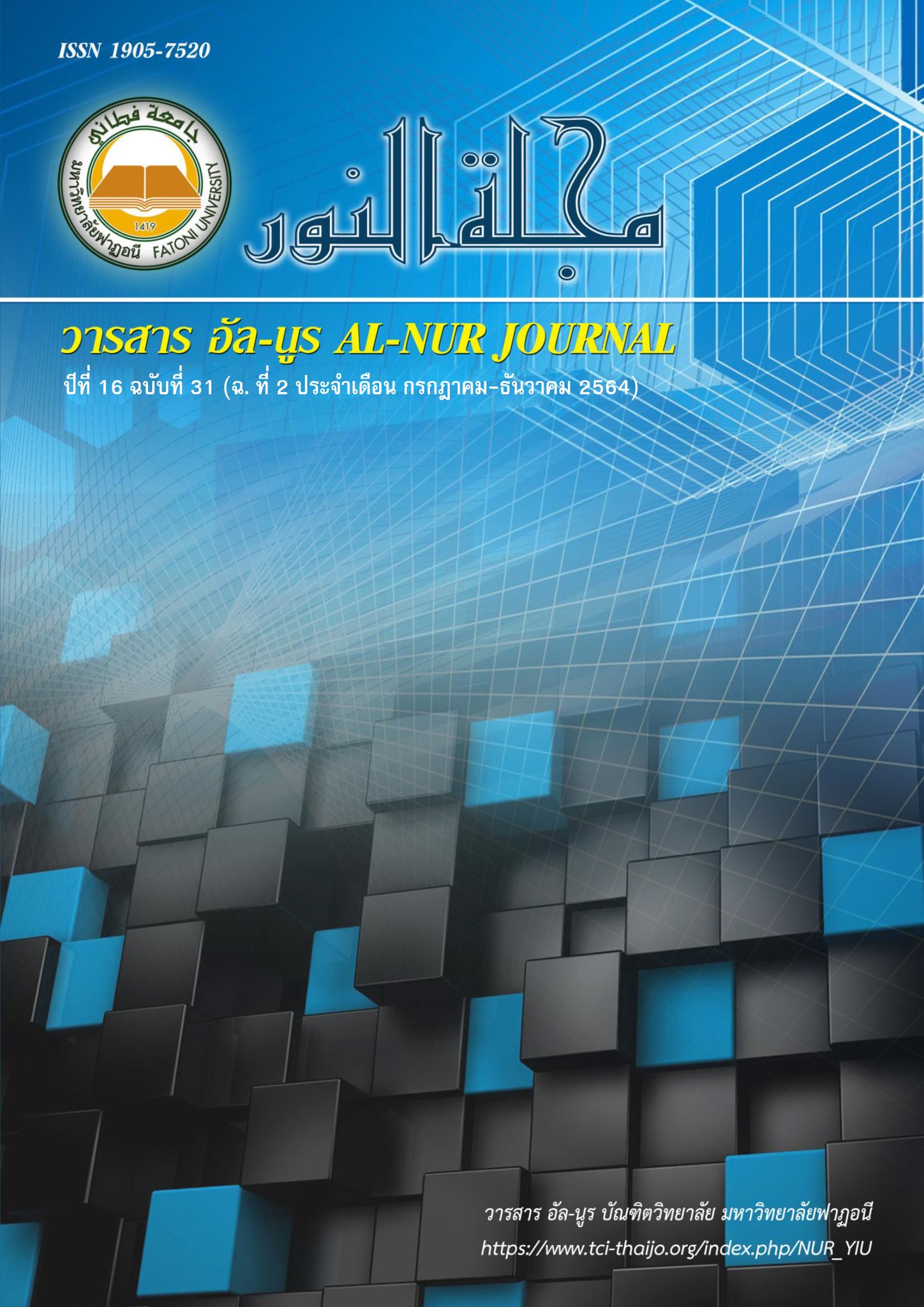The Guidelines for Crisis Communication Management to Promote Tourism in Thailand amid the COVID-19 Pandemic
คำสำคัญ:
Keywords: crisis communication management, COVID-19, Tourism Business Management, Thailandบทคัดย่อ
แนวทางการบริหารจัดการสื่อสารในภาวะวิกฤติโรคระบาดโควิด 19
เพื่อส่งเสริมการจัดการธุรกิจการท่องเที่ยวในประเทศไทย
ณัชชา พัฒนะนุกิจ
* ดร.(นิเทศศาสตร์), อาจารย์ประจำ หลักสูตรนิเทศศาสตร์มหาบัณฑิต คณะนิเทศศาสตร์ มหาวิทยาลัยกรุงเทพธนบุรี
บทคัดย่อ
การศึกษาวิจัยเรื่อง แนวทางการบริหารจัดการสื่อสารในภาวะวิกฤติโรคระบาดโควิด 19 เพื่อส่งเสริมการจัดการธุรกิจการท่องเที่ยวในประเทศไทย มีวัตถุประสงค์ดังนี้ 1) ศึกษาการบริหารจัดการสื่อสารในภาวะวิกฤติโรคระบาดโควิด 19 เพื่อส่งเสริมการท่องเที่ยวในประเทศไทย 2) ศึกษาปัญหาและอุปสรรคการบริหารจัดการสื่อสารในภาวะวิกฤติโรคระบาดโควิด 19 เพื่อส่งเสริมการท่องเที่ยวในประเทศไทย 3) เพื่อค้นหาแนวทางการบริหารจัดการสื่อสารในภาวะวิกฤติโรคระบาดโควิด 19 เพื่อส่งเสริมการท่องเที่ยวในประเทศไทย การวิจัยครั้งนี้เป็นการวิจัยเชิงคุณภาพ (Qualitative Research) เก็บข้อมูลโดยการสัมภาษณ์เชิงลึก (In-Depth Interview) คัดเลือกกลุ่มตัวอย่างแบบเจาะจง (Purposive Sampling) ประชากร คือ กลุ่มเจ้าหน้าที่ระดับบริหารและระดับปฏิบัติการของ กรมการท่องเที่ยว กระทรวงการท่องเที่ยวและกีฬา สภาอุตสาหกรรมท่องเที่ยวแห่งประเทศไทย จำนวน 8 คน
ผลการศึกษาพบว่า
- การบริหารจัดการสื่อสาร ดังนี้ 1) ควรมีนโยบาย มาตรการ และแผนการรณรงค์ให้ผู้ประกอบการธุรกิจการท่องเที่ยวยกระดับคุณภาพ บริการ ให้ได้ตามเกณฑ์มาตรฐานความปลอดภัยด้านสุขอนามัย หรือ SHA ร่วมกับประชาชนในท้องถิ่น 2) ควรมีแผนรณรงค์ฉีดวัคซีนเพื่อเพิ่มจำนวนผู้มีภูมิต้านเชื้อไวรัส เพื่อนำไปสู่แผนการเปิดประเทศ
- การจัดการธุรกิจการท่องเที่ยว ดังนี้ 1) การบริหารจัดการเป็นการทำงานแบบบูรณาการร่วมกันทั้งภาครัฐ เอกชน 2) มีการกำหนดหน้าที่แบ่งงานชัดเจนตามนโยบายของหน่วยงาน 3) การจัดการด้านการสื่อสาร มีการจัดตั้งการประชุมแบบ War room รวมกลุ่มผู้แทนทั้งภาครัฐ เอกชน 4) กลยุทธ์การสื่อสารใช้สื่อดิจิทัล และสื่อบุคคลในช่องทางเครือข่ายของกระทรวงการท่องเที่ยว
- ปัญหาและอุปสรรคการบริหารจัดการสื่อสาร ดังนี้ 1) ในอดีตไม่ได้ให้ความสำคัญกลุ่มนักท่องเที่ยวคนไทย ทำให้ขาดความสมดุลระหว่างจำนวนนักท่องเที่ยวในประเทศและต่างประเทศ จนส่งผลต่อเศรษฐกิจของประเทศไทย 2) การว่างงานเพิ่มขึ้นสูงมาก 3) ประชาชนในท้องถิ่นไม่ให้ความร่วมมือในการควบคุมการแพร่ระบาดโรคโควิด-19 ในแหล่งท่องเที่ยว
- ข้อเสนอแนะ แนวทางการบริหารจัดการสื่อสารในภาวะวิกฤติโรคระบาดโควิด 19 เพื่อส่งเสริมการท่องเที่ยวในประเทศไทย ดังนี้ 1) ภาครัฐควรกำหนดนโยบายมาตรการเพื่อการปฏิบัติตามมาตรฐานความปลอดภัยด้านสุขอนามัย หรือ SHA 2) ควรพัฒนาศักยภาพของบุคลากร ให้มีความรู้ เกี่ยวกับมาตรการความปลอดภัยด้านสุขอนามัย 4) ควรเพิ่มช่องทางการสื่อสารประชาสัมพันธ์ทางสื่อออนไลน์มากขึ้น
คำสำคัญ: การจัดการสื่อสารในภาวะวิกฤติ, โควิด 19, การจัดการธุรกิจการท่องเที่ยว, ประเทศไทย
เอกสารอ้างอิง
Kritnat Saanthawee. (2014). The Factor of Crisis Communication and Integrated Marketing Communication
in Tourism of Thailand. RMUTP Research Journal Special Issue The 5Th Rajamangala University of
Technology National Conference. 165-173. Retrieved April. 29. 2021. from https://www.tci- thaijo.org/index.php/rpu/article /view/112615/87717
Panasit Onya and others. (2019). Factors Affecting the Success of the Management of Tourist Destination
that Comply with Thailand Tourism Standard. Journal of Humanities and Social Sciences. Rajapruk University.4(3) October 2018 - January 2019. 75-86. Retrieved April. 29. 2021. from https://www.tci-thaijo.org/index. php/rpu/article/view/112615/87717
Sutep Singkhalah. (2017). Development of Sustainable Tourism at Kamala Sub-district and Kathu District,
Phuket in Tourism Operators’ and Local Government Officers’ Perspective. Journal of Humanities
and Social Sciences. Rajapruk University. 3(2) June-September 2017. 127-136. Retrieved April, 29, 2021.
From https://www.tci-thaijo.org/index. php/rpu/article/view/112615/87717
Supphawat Chuamuangphan. Paranee Phowpooton. Sangkom Sanbuddee and Jukkaphong Poung-ngamchuen.
(2013). The study of potential development of community tourism: a case study of
Ban Rai Kong Khing, Nong Khwai Sub-district, Hang Dong District, Chiang Mai.
KHON KAEN AGR. J. 41 SUPPL. 1. 678-684.
Nalaumon Anusonphat. (2020). Economic Adjustment in Tourism under the Coronavirus Disease 2019
Crisis in Thailand. Journal of Humanities and Social Sciences. Vol. 8 No. 1 (January – June 2020). 1-25.
Retrieved April. 29. 2021. from https://www.tci-thaijo.org/index. php/rpu/article/view/112615/87717
Patra Prommarak. (2017). The Use of Digital Media in Crisis Communication Strategies and Crisis
Management Practices in The Restaurant Industry. Department of Digital Marketing Communication.
Faculty of Communication. Bangkok University.
Nattavadee Poolamphai. (2013). A Crisis Communication Process of The Thai Red Cross Society for
the Purpose of Relief and Response of flood crisis victims. Department of Communication of Arts.
Faculty of Communication. Dhurakij Pundit University.
Tarinee Wisamitanan, Autchara Yodsri, Winai Luekhachon and Sermsak Khunpol. (2019). Communication and
management of crises in case study the capsize of Phoenix PC Driving boat at Phuket province.
The 10th Hatyai National and International Conference. 187-214. Journal of Humanities and Social Sciences
Vol. 8 No. 1 (January – June 2020. 1-25.
Suthep Singkhala. (2019). Sustainable Tourism Development of Patong Beach Phuket Province. Journal of
Humanities and Social Sciences. Rajapruk University. 5(2). 110-124. Retrieved April. 29. 2021. from
https://so03.tci-thaijo.org/index.php/rpu/article/view/220531.
Aree NaiPinit and Thirachaya Maneenet. (2008). The Community Participation to Tourism Management at
Busai Village Home Stay, Wangnamkhieo District. Nakhon Ratchasima Province. Faculty of Management Science. Khon Kaen University.
Pipawan Lawakul. (2010). Crisis communication planning strategies of Thai commercial banks. Master of
Communication Arts. Chulalongkorn University.
The Public Relations Department. (2002). Crisis Public Relations Manual. 9-13. Bangkok: KMUTT.
Boonlert Jittungwatana. (2005). Tourism Industry. Bangkok: Press and Design.
Tourism Authority of Thailand. (2002). Ecotourism from the perspective of the people. Bangkok: Ministry of
Tourism and Sports.
Rampaipan Keawsuriya. (2004). Document and article on Principles for sustainable tourism development.
Bangkok: Conservation Division. Tourism Authority of Thailand.
Cason, W. C. (2013). The use of new media technologies in crisis communication of U.S. and
U.S.- affiliated Corporation: A new paradigm distinguishing crisis prepared organization from
their crisis prone counterparts. Unpublished master’s thesis. University of Maryland University College.
USA.
Picharm Geeyapeerapat. (2015). Crisis Communication Study of the Company Sansiri Public Company
Limited with social media. Master's Thesis. Ramkhamhaeng University.
Vilach Laphirattanakul. (2006). Public relations (complete). 11th edition. revised. Bangkok : Chulalongkorn
University Press.
Coombs (n.d. อ้างใน Picharm Geeyapeerapat. (2015). and Vilach Laphirattanakul. (2006).
Robert R. Ulmer, Timothy L. Sellnow, and Matthew W. Seeger. (2007). Effective Crisis Communication: Moving From
Crisis to Opportunity. 33-46. Thousand Oaks, CA: Sage
ดาวน์โหลด
เผยแพร่แล้ว
ฉบับ
ประเภทบทความ
สัญญาอนุญาต
ลิขสิทธิ์ (c) 2022 nutcha patananukit

อนุญาตภายใต้เงื่อนไข Creative Commons Attribution-NonCommercial-NoDerivatives 4.0 International License.
Proposed Creative Commons Copyright Notices


